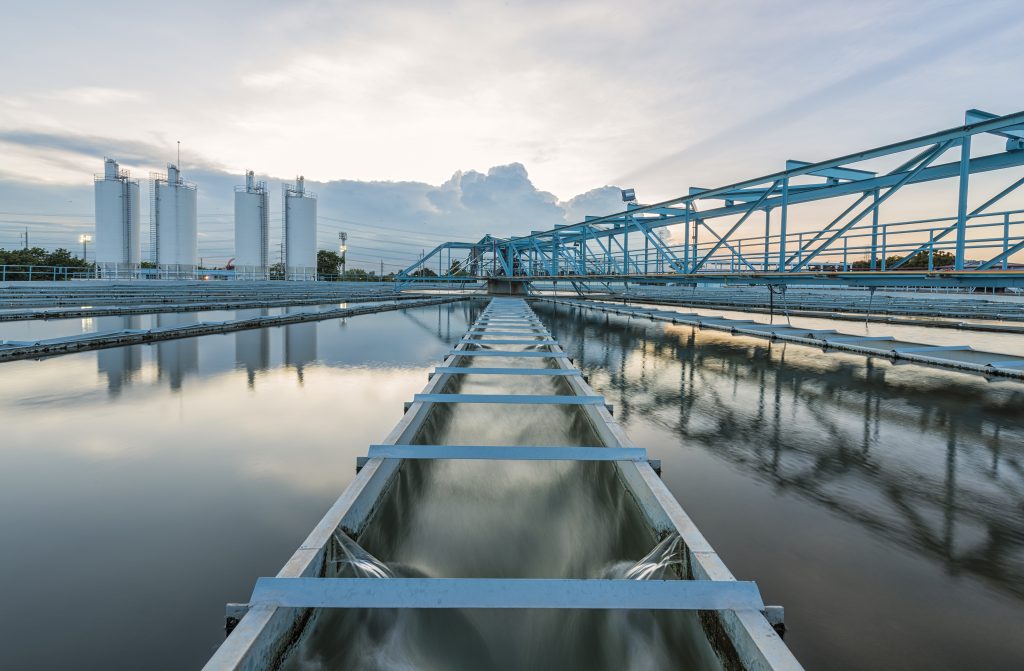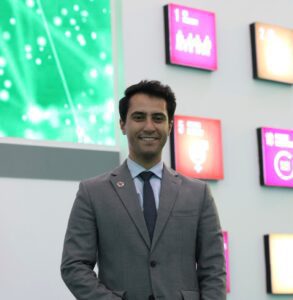Over two billion people live in water-stressed countries where water demand exceeds the available supply or poor water quality restricts its use. By 2030, this number is expected to double, with half of the world’s population having less water than they need. This is not just a local issue but a global crisis that demands immediate attention.
Industries intensify this water stress. They account for nearly 20% of global freshwater usage – the type of water communities rely on for daily life. The semiconductor industry alone uses about 264 billion gallons a year, equivalent to the water needs of a small city. Urgent water management is needed. Implementation of water circularity practices in these industrial operations conserves water and delivers substantial economic benefits. This can drastically reduce water use, lower costs, enhance reputation, and contribute to a sustainable future.

Let’s explore the importance of water circularity, its environmental and economic advantages, and how innovative solutions show that industrial progress and sustainability can go hand in hand.
Understanding water circularity
Water circularity is a sustainable approach to water management. It emphasizes the reuse and recycling of water resources and can significantly mitigate the impact of water scarcity. Essentially, it allows water to have multiple lives through continuous use, treatment, and reuse cycles.
This practice is critical in addressing water scarcity by minimizing freshwater extraction and reducing wastewater discharge. Water circularity allows industries to capture rainwater, reuse greywater, and recycle wastewater, 80 percent of which goes back into our environment without treatment.
A win-win for sustainability and the economy
The benefits of water circularity extend well beyond sustainability and conservation. They include economic advantages like reduced water costs and enhanced operational efficiency. Water circularity conserves freshwater resources, reduces water pollution, and helps maintain ecological balance. By reusing and recycling water, industries can minimize their impact on natural water sources, preserving them for future generations. Economically, water circularity can lead to substantial cost savings by reducing the need for freshwater intake and wastewater treatment. This benefits the environment and the bottom line of industrial operations. And it offers a promising outlook for a sustainable and profitable future.
For example, companies can save up to 30% or more on water-related costs through efficient reuse practices. Businesses adopting these practices can enhance their brand image, demonstrate a commitment to sustainability, and attract environmentally conscious consumers and investors. By reducing water-related risks, companies may also lower their insurance costs. Efficient water use can mitigate financial risks associated with water scarcity and pollution and save millions annually.
Schneider Electric’s water circularity initiatives
Schneider Electric is a leader in integrating water circularity into its operations and showcases a robust commitment to sustainability and resource efficiency. We have over 250 manufacturing sites worldwide and have strategically implemented a variety of water conservation and circularity practices in many of them:
- Water recovery and reuse technologies enable water capture, treatment, and reutilization within our facilities – significantly reducing the need for freshwater intake. For example, we have implemented systems in our facilities to recover water from processes such as surface treatment lines. This recovered water is then treated and reused, minimizing wastewater discharge and conserving freshwater resources.
- Rainwater harvesting captures and stores rainwater, which has reduced our reliance on municipal water supplies and decreased operational costs. The harvested rainwater supports various non-potable applications, such as irrigation and cleaning.
- Water treatment innovations include IoT sensors and digital platforms to monitor and optimize water usage in real-time. Our Le Vaudreuil facility in France implemented a zero-reject water recycling unit that treats and purifies process water, allowing for multiple reuses. Cloud analytics monitored by AI can predict and process water flows, which has led to a 64% reduction in water use. Le Vaudreuil was recognized as an Advanced Lighthouse in 2018 and Sustainability Lighthouse in 2022 – one of only six worldwide.
Supporting our customers and strategic partners with circular water solutions
Wilo, a leading pump manufacturer, has collaborated with Schneider Electric to develop and implement a green hydrogen plant at their headquarters in Dortmund, Germany. With the H2Powerplant, the two long-standing partners developed and introduced this complete solution for generating and storing surplus renewable energy. This solution is fully aligned with Wilo’s central Ambition 2025 corporate strategy , which is to provide more people with clean water while reducing the company’s ecological footprint.
This facility harnesses rainwater, capturing and treating it through advanced purification processes, to produce green hydrogen via electrolysis. The rainwater is purified using reverse osmosis and then fed into an electrolyzer, which splits the water into hydrogen and oxygen using renewable energy. EcoStruxure™ Automation Expert manages the entire process, ensuring a fully automated, efficient, and reliable operation. The result is a sustainable manufacturing process that reduces reliance on freshwater resources, encourages the use of green energy, and minimizes the facility’s environmental footprint.
In Brazil, the largest wastewater plant in Latin America—the Aquapolo treatment plant— handles wastewater from a large urban area in São Paulo. Instead of discharging treated water back into the river, it supplies a nearby petrochemical industrial area. They then process the wastewater through a tertiary treatment to meet high-quality industrial-use standards.
This approach significantly alleviates the demand for municipal water supplies, saving water for more than 500,000 people in São Paulo. For every liter of recycled water they produce, a liter of drinking water can be saved. This circularity approach proved itself during the city’s last drought—other industrial sites outside the Aquapolo area were forced to close while Aquapolo-supplied plants continued to operate. For Aquapolo, technology is crucial to ensure fully automated operations for process management and quality monitoring. This technology helps it deliver reliable and sustainable water resources to industrial users despite challenging water and climate scenarios.
A blueprint for water sustainability in Industry
Water circularity practices can significantly enhance sustainability and operational efficiency in industrial settings. In addition to the measures already discussed—water recovery, rainwater systems, and water treatment technology— there are more ways industries can integrate water circularity into their operations:
- Measure and monitor water consumption: Begin with a comprehensive assessment of your facility’s water footprint. Use smart meters and IoT sensors to monitor water usage in real time. Establish key performance indicators (KPIs) to track progress and identify areas for improvement.
- Educate and train employees: Educating employees about the importance of water conservation and circularity fosters a culture of sustainability. Companies can do this by providing training on best practices for reducing water waste and optimizing water use in daily activities.
- Partner with experts: Collaborate with water management experts and technology providers to design and implement effective water circularity solutions. Leveraging external expertise can help identify innovative approaches and ensure the integration of new technologies. Experts can also help you investigate available financial incentives, grants, and support programs for implementing water conservation and circularity measures.
- Continuously improve and innovate: Review and update your water management practices to incorporate new technologies and innovations. Conduct periodic audits to assess the effectiveness of your water circularity initiatives and make necessary adjustments to enhance performance.
- Take collective action: extend beyond your factory boundaries, encourage your supply chain to reduce water impacts, and partner with other actors in water replenishment programs.
Closing the loop
The cost of doing nothing far outweighs the cost of taking action. Adopting water circularity practices is crucial for industry to ensure a sustainable future. The good news is that integrated, transverse, and interoperable digital technology can transform industrial water use into something sustainable, circular, and economically viable.
Find out more about how your organization can enhance its water use practices.




Add a comment